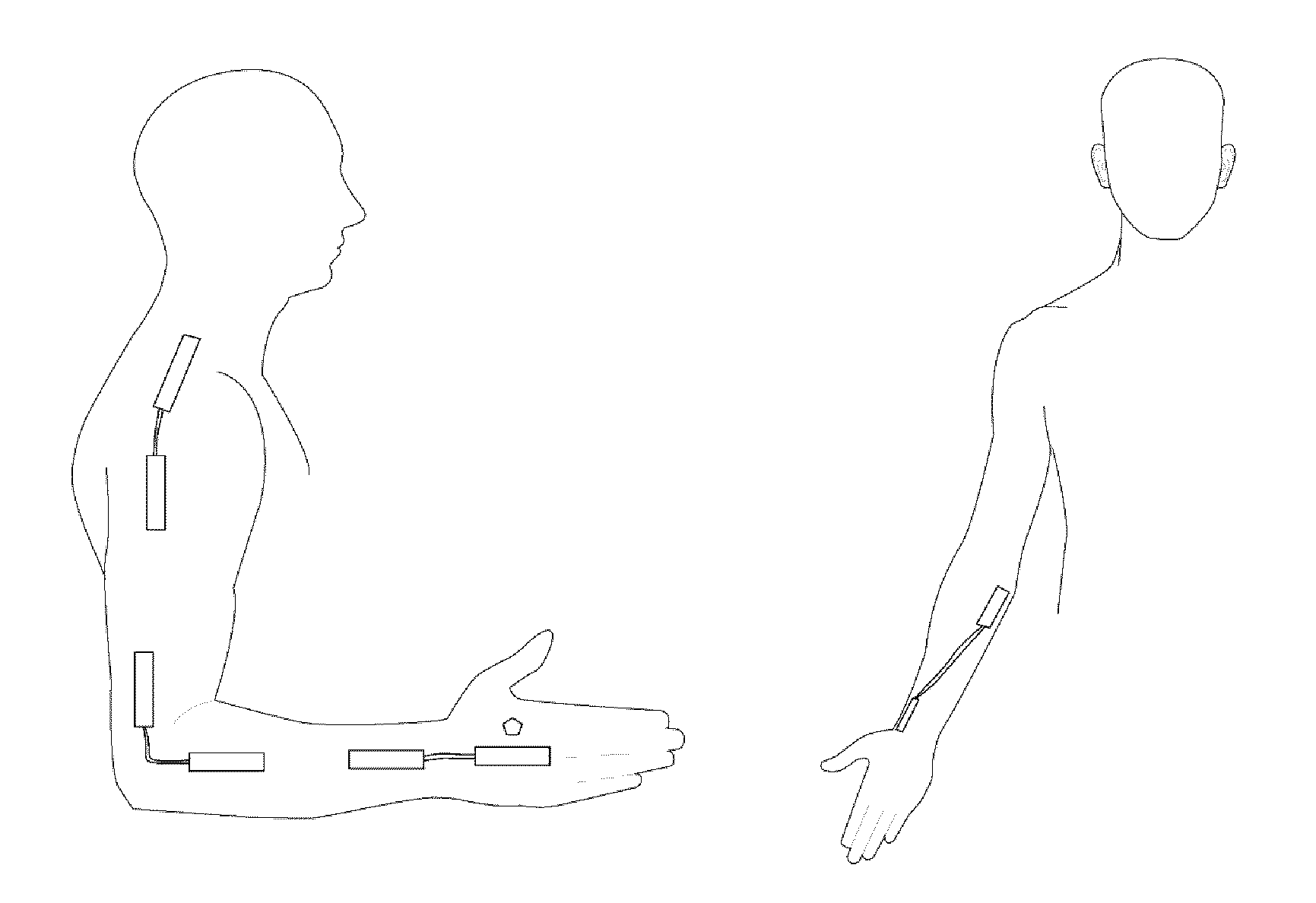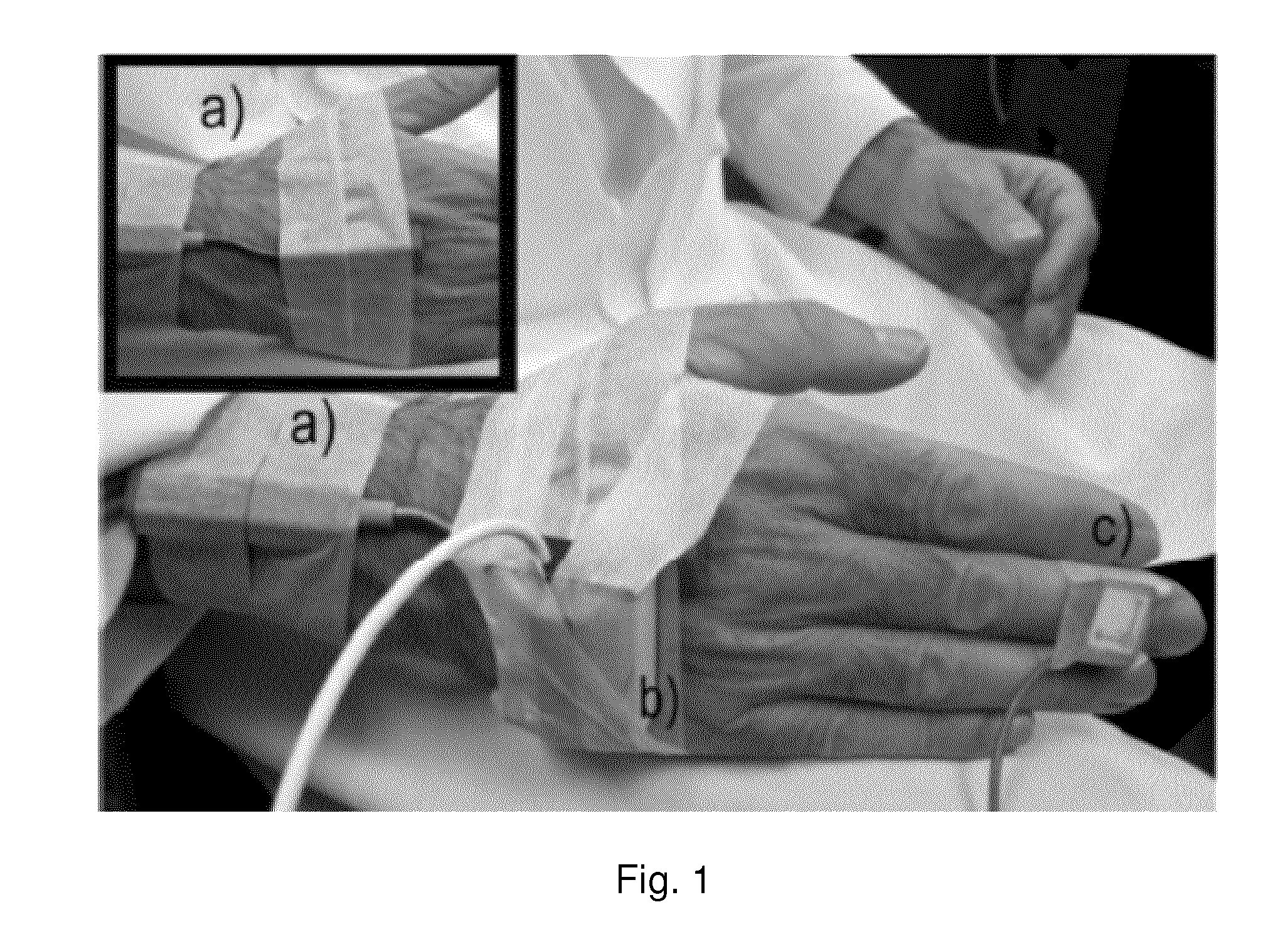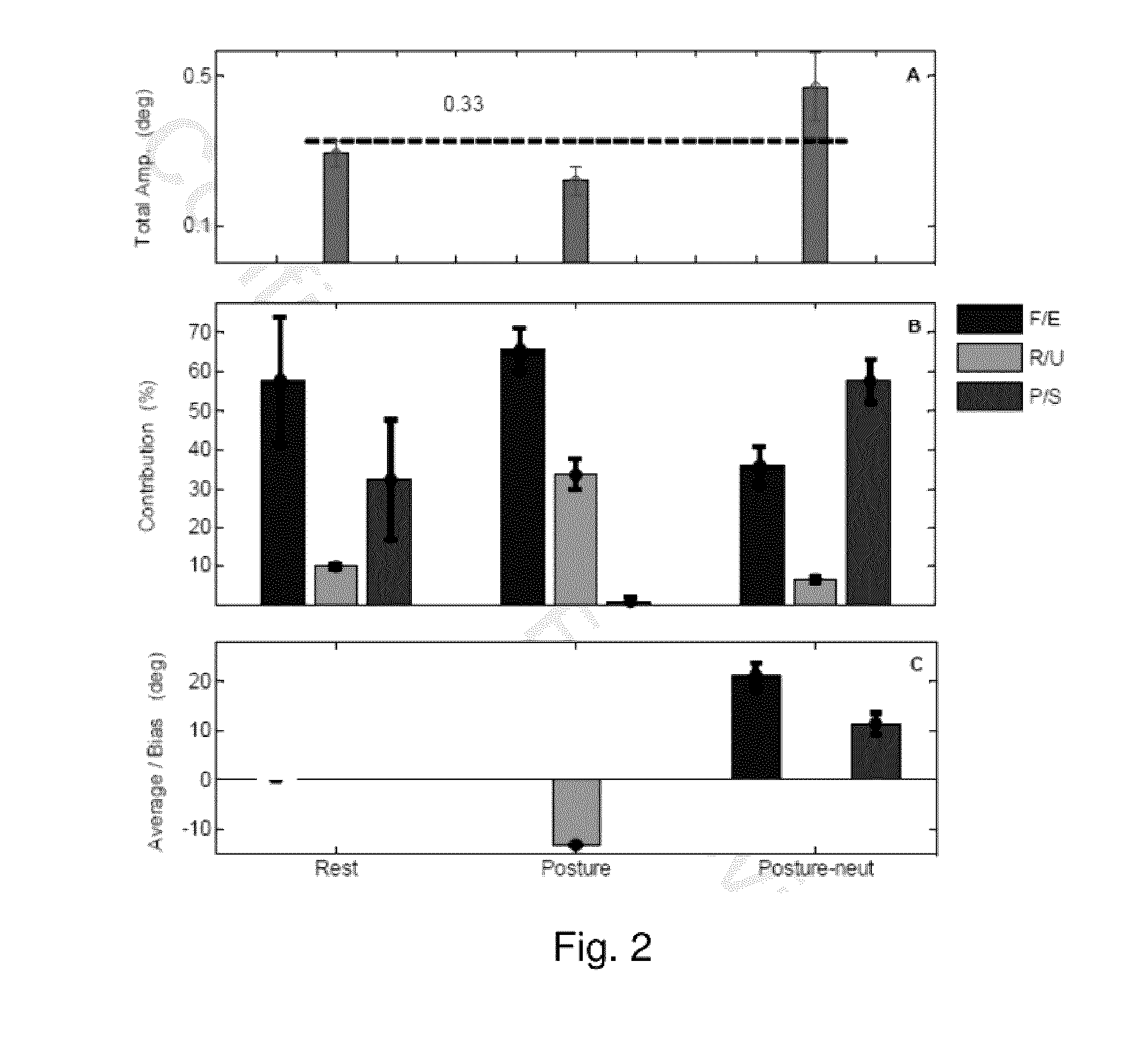Diagnosing and treating movement disorders
a movement disorder and diagnosis technology, applied in the field of medicine, can solve the problems of not being validated, emotionally distress, substantially disabled, etc., and achieve the effects of reducing the severity of abnormal movements, increasing the amount of time required, and reducing the magnitude of motions
- Summary
- Abstract
- Description
- Claims
- Application Information
AI Technical Summary
Benefits of technology
Problems solved by technology
Method used
Image
Examples
example 1
Kinematic Assessment of Tremor Composition and Directional Bias in a Wrist
[0049]Kinematic methodology is well established for studying the dynamics of movement in the upper limb. Technological advances have made this a reliable and viable option in the characterization of complex movements such as tremor. Wrist tremor, for example, is variable and has three directions of movement: flexion / extension (F / E), radial / ulnar (R / U), pronation / supination (P / S). Hence, visually-guided judgment of the complexity of movement over time may be difficult and inaccurate. Further, kinematic studies to date have not deconstructed the complex movements into their muscle compositions and directional biases within muscle groups. As described herein, kinematic methodology can accurately allow for assessment of all these variables, leading to improved characterization of tremor dynamics. In order to understand the biomechanics of tremor in both ET and PD, the composition of these tremor types in a wrist w...
example 2
Treating Arm Limb Tremor and Deviation Using Kinematic Analysis and Botulinum Neurotoxin Type A (BoNT A) Injection for Wrist, Elbow and Shoulder
[0076]In order to capture the accurate representation of tremor in the upper limb, measurements were done on the entire arm on all major joints; wrist, elbow and shoulder. Wrist tremor is highly variable and has three directions of movement: flexion / extension (F / E), radial / ulnar (R / U), and pronation / supination (P / S), as mentioned in Example 1. Elbow tremor has one direction of movement done by flexion / extension (F / E), while shoulder tremor has three directions of movement: flexion / extension (F / E), abduction / adduction (A / A), and internal / external rotation. With same criteria as Example 1, 18 ET and 23 PD patients, different recruits from Example 1, were enrolled into a 8 month long arm tremor study with baseline data collected (Table 4).
TABLE 4Subject Demography for ET and PDETPDIDAgeGenSideIDAgeGenSideMT-0776MRMT-0171FLMT-0874FRMT-0235MRMT-0...
example 3
Treating Head and Neck Tremor with Torticollis Using Kinematic Analysis and Botulinum neurotoxin type A (BoNT A) Injection
[0086]A subject's head and neck tremor was measured and analyzed generally in accordance with the kinematic method described in Examples 1 and 2. To accomplish this, sensors were placed on the subject's body as depicted in FIG. 8A, with sensors on the head and neck of the subject. FIG. 8A depicts sensors on the head, shoulder and neck. The torsiometer was placed at the back of the neck while two inclinometers are placed on both shoulders and one inclinometer is placed on the side of the patient's head. The torsiometer was able to detect rotational tremor and dystonic movements along with the rotational range of movement. The two inclinometers on the shoulders are able to capture shoulder elevation. The inclinometer located on the side of the patient's head was used to measure tremor and dystonic movements for lateral left-right tilts and forward-backward head sag...
PUM
| Property | Measurement | Unit |
|---|---|---|
| degrees of freedom | aaaaa | aaaaa |
| movements | aaaaa | aaaaa |
| movement disorder | aaaaa | aaaaa |
Abstract
Description
Claims
Application Information
 Login to View More
Login to View More - R&D
- Intellectual Property
- Life Sciences
- Materials
- Tech Scout
- Unparalleled Data Quality
- Higher Quality Content
- 60% Fewer Hallucinations
Browse by: Latest US Patents, China's latest patents, Technical Efficacy Thesaurus, Application Domain, Technology Topic, Popular Technical Reports.
© 2025 PatSnap. All rights reserved.Legal|Privacy policy|Modern Slavery Act Transparency Statement|Sitemap|About US| Contact US: help@patsnap.com



